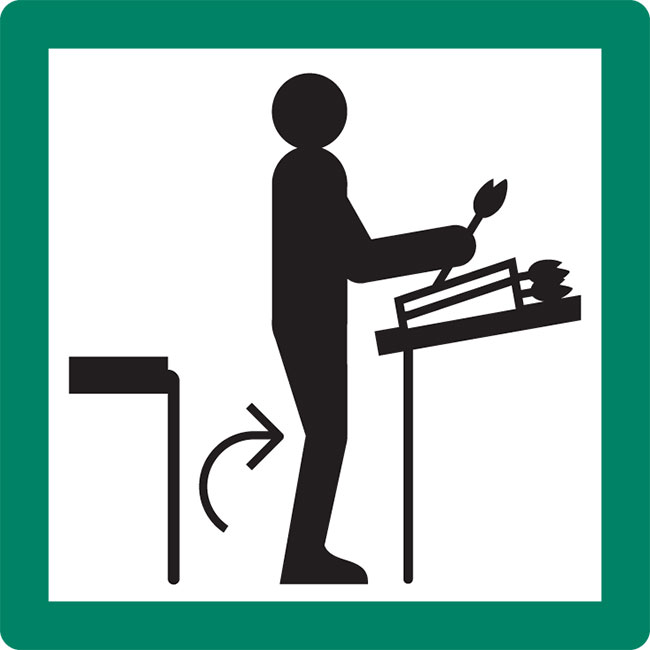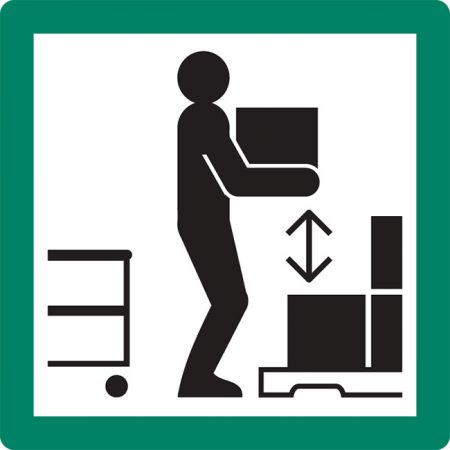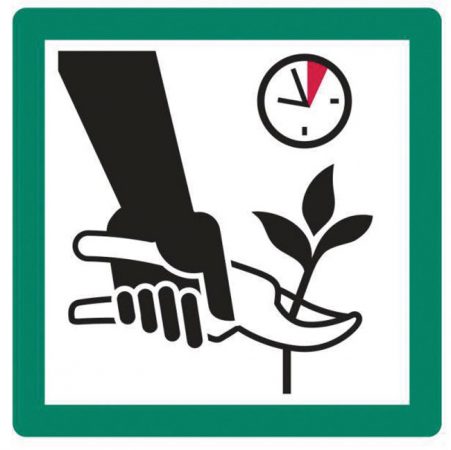
Features
Business
Labour
Greenhouse work shouldn’t hurt
Working in the greenhouse? Here are four areas of focus to prevent strain and discomfort on the job.
July 27, 2021 By Kristin Hoffman
 Check your posture
IMAGES: WSPS
Check your posture
IMAGES: WSPS Greenhouse work can be physically demanding. Lifting heavy trays, pushing carts, gripping tools, bending, reaching and spending long periods of time sitting or standing, can all be culprits of worker strain and discomfort. Moreover, these daily tasks can lead to musculoskeletal disorders (MSDs).
What are MSDs?
MSDs are injuries of:
- muscles
- tendons
- ligaments
- bones
- nerves
Symptoms of MSDs include:
- pain
- swelling
- decrease in range of motion
- tingling
- numbness
Symptoms can occur suddenly or develop gradually over time. Some examples of common MSDs include back pain, carpal tunnel syndrome and tendonitis.
MSDs develop as a result of:
- excessive force
- repetition
- awkward posture
- other hazards
How to prevent MSDs on the job
The good news is, you can prevent MSDs by devoting attention to four key areas: postures, movement, material handling, and stretching.
1. Check your posture
Sitting or standing for long periods can have negative effects on your body, so alternating your body posture is extremely important. Moving from sitting to standing helps enhance circulation and minimizes fatigue.
A workstation that can be adjusted to ensure proper posture is ideal; however, simple ergonomic principles can be applied to the most basic workstation set-up too.
While sitting (e.g. taking cuttings or operating a planting machine)
- keep feet flat on the floor; ankles at approximately 90 degrees
- keep upper legs horizontal to the ground; knees at approximately 90 degrees
- position torso, neck and head straight (not twisted) and upright
- set shoulders in a natural position; back and down
- keep upper arms vertical alongside the torso, with elbows close to the body
- position forearms horizontal to the ground; elbows at approximately 90 degrees
- keep wrists straight
While standing (e.g. operating a potting machine or packaging vegetables)
- keep legs straight or one foot on a footrest intermittently
- position torso, neck and head straight (not twisted) and upright
- set shoulders in a natural position; back and down
- keep upper arms vertical alongside the torso, with elbows close to the body
- position forearms horizontal to the ground; elbows at approximately 90 degrees
- keep wrists straight
The postures noted above can apply to most activities; however, not all jobs are created equal. Postures may need to change depending on the tasks being performed by the worker and equipment being used. This is especially true when force or precision is needed.
2. Follow the 20-8-2 rule
Greenhouse jobs can often be repetitive; requiring you to sit and/or stand for long periods of time. Maintaining these static postures can result in body fatigue and discomfort. An easy way to combat this is to get up and moving! Use the 20-8-2 rule as your guide. If you sit for 20 minutes, get up and stand for 8 minutes, and move or gently stretch for 2.
Watch a quick video to learn more about the 20-8-2 rule.
If implementing the 20-8-2 rule is tricky, consider these options:
- go for a walk in a safe environment using a wireless headset while you’re on the phone
- hold walking meetings, in person or virtually
- stand when you’re reading notes or when on the phone
- avoid eating at your workstation, which leads to more sitting
- change postures during your breaks: if you’ve been sitting, then stand up; if you’ve been standing, then take a seat; better yet, if possible go for a walk
3. Move and handle items safely
Manual material handling is fundamental to most greenhouse jobs. This is when you move or handle things by lifting, lowering, pushing, pulling, carrying, etc. Eliminating the need for manual material handling is ideal for relieving strain on the worker, but not always possible. So do your best to reduce the need. Make use of assistive devices (when and where available) and practise safe manual material handling techniques.

When moving or handling by lifting, be sure to warm up, test the load weight and get help with awkward or heavy loads.
Tips for using material handling devices (carts, hand trucks and wheelbarrows):
- keep devices in good condition
- do not overload
- load heavy objects before the lighter ones
- keep view unobstructed
- maintain a controllable speed
- avoid moving loads up and down slopes
- push rather than pull and only one load at a time
Get more information on safe use of specific material handling devices at WSPS.ca. These include hand trucks, conveyors, powered industrial trucks and cranes: http://wsps.news/AgMaterialHandling
Tips for safe manual material handling:
- warm up your body
- wear appropriate clothing and comfortable, safe footwear
- test the load weight
- get help with awkward or heavy loads
- ensure the load is free to move
- ensure the path is clear
- position your feet shoulder-width apart to establish a wide base of support
- grip the load securely
- tighten your abdominal muscles and tuck your chin
- bend your knees, lifting with your legs not your back
- lift smoothly
- keep the load close and centred to your body
- do not twist; move your feet to turn
- avoid carrying with only one hand
Learn more tips and tricks for preventing lifting and overexertion injuries at WSPS.ca.
4. Remember to stretch
In the greenhouse, static postures and repetitive work can cause muscles to shorten and tighten. This leads to worker discomfort and difficulty moving and working. Prevent this discomfort by stretching. As an added bonus, stretching can increase body awareness and promote relaxation.

Repetitive work can lead to muscle tightening. Be sure to stretch throughout the day, focusing on areas involved in repetitive work or static postures.
Tips for stretching success:
- stretch often throughout the day
- warm up your body before stretching
- focus on the parts of the body that are involved in repetitive work or static postures such as the back, neck, shoulders and hands
- hold each stretch for 15 to 30 seconds and go at your own pace
- stop stretching if you feel uncomfortable, dizzy or experience any pain
- consult your doctor before starting any new physical activities, especially if you have any health-related issues
Want to stretch but don’t know where to start? Free stretching resources are available on WSPS.ca:
- Work Warm-Up , Stretch and Flexibility Guide
- Before Work Warm-Up
- During Work Stress Releasers
- At Home Flexibility Stretches
What to do if you spot an MSD hazard at work
The first step to resolving a hazard is recognizing one. Everyone at a workplace – employer, supervisor or worker – has a role and responsibility in this. Report any potential MSD hazards and symptoms to your employer so that they can be properly investigated and remedied through effective controls.
More MSD resources and information
Have questions not answered here? Access free downloadable ergonomic resources and other agricultural safety information at WSPS.ca.
Kristin Hoffman is a Registered Kinesiologist, Registered Massage Therapist and Health & Safety Consultant with Workplace Safety & Prevention Services (WSPS); a health and safety association responsible for over 171,000 member firms and 4.2 million workers across Ontario’s agricultural, manufacturing and service sectors. Kristin has a passion for occupational safety and agriculture. Her years of experience include hazard identification, assessment and control activities and dynamic training for businesses.
To contact a WSPS safety expert, visit http://wsps.news/contactus
Print this page